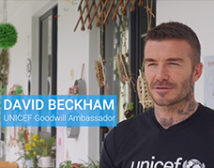DAVOS, 22 January 2015 – In many countries around the world, significantly less public resources are used to educate children in the poorest 20 per cent of society than their counterparts in the most affluent 20 per cent, according to a new report issued today by UNICEF. This difference can be as much as 18 times.
The Investment Case for Education and Equity says that on average 46 per cent of public education resources in low-income countries directly benefit the 10 per cent of students who are the most educated. In lower-middle income countries the figure is 26 per cent. This imbalance disproportionately favours children from the most affluent households who typically attain the highest levels of education.
The report, the first in a series UNICEF is releasing this year with support from the Bill and Melinda Gates Foundation, strongly advocates for more equitable education spending. It calls on governments to prioritise the needs of the most marginalised children – the poor, girls, ethnic and linguistic minorities, children with disabilities and those living in conflict zones.
“There are approximately 1 billion primary and lower-secondary school-aged children in the world today. That's 1 billion reasons for investing in education,” said Yoka Brandt, UNICEF Deputy Executive Director. “Too many of these children do not receive quality education because of poverty, conflict, and discrimination due to gender, disability and ethnicity. To change this we need to radically revise current practices by providing more resources and allocating them more equitably.”
The report also highlights a further serious crisis in education. Progress in increasing access to schooling has stalled – with 58 million primary school-aged children not in school, it is clear that Millennium Development Goal 2 (achieve universal primary education) will not be met. In addition, many of those currently attending classes are not actually learning. Data reveal that 130 million children who reach Grade 4 do not master the basics of reading and arithmetic.
This situation will worsen as the size of the school-age population increases. To achieve universal basic education, the world will have to enrol an additional 619 million children between the ages of 3 and 15 by 2030, an increase of 57 per cent on today's figures.
Despite this, public resources for education are diminishing. There is an annual funding gap of $26 billion for the provision of universal basic education in 46 low-income countries, and since 2009 official development assistance to education has decreased by 10 per cent. To put this into perspective, just 5 per cent of the annual profits of the world's 15 highest-earning companies would eliminate this resource gap.
UNICEF urges governments and donors to increase their spending on education and ensure that funds are utilised more efficiently and are distributed more equitably. The private sector also has a vital role to play in mobilising resources for education, according to the report.
“We have known for a long time that education can break the cycle of persistent poverty and disadvantage for children, families and countries. But to do this, governments and the private sector need to not only invest more, but also invest more wisely in education,” Brandt said.
###
Notes to editors
The Investment Case for Education and Equity calls to action:
Governments:
-
Must invest more. The resources allocated to education are far too limited. It is possible and necessary for countries to
mobilise more resources from their domestic budgets.
-
Should adopt resource allocation policies that explicitly focus on the most disadvantaged children and on regions in order
to decrease the equity gap.
-
Should prioritise basic education in low-income countries. In middle-income countries investments should be aimed
primarily at secondary, technical and vocational education. High-income countries should focus on tertiary education.
-
Must focus on investments that have the greatest impact for access and learning. The most cost-effective interventions
and policies should be identified on a country by country basis using strong evidence.
-
Need to strengthen learning assessment systems, in particular for the early grades. Better data on marginalised children,
especially on children with disabilities, should also be gathered to ensure that the barriers to school access are eliminated.
-
Should be more accountable to communities, parents and children for education results.
-
Should also provide non-formal or ‘second-chance' programmes to give excluded children and youth opportunities to gain an education.
Donors:
-
Must increase aid to education. External resources are insufficient and since 2009 official development assistance to
education has decreased by 10 per cent.
-
Should focus their investments in low-income countries on pre-primary, primary and lower secondary education.
-
Should allocate a 10 per cent share of global humanitarian aid to education.
Private sector:
-
Must invest in education and play a greater role in mobilising resources for the sector.
-
Should align business goals and practices with educational goals.
About UNICEF
UNICEF promotes the rights and wellbeing of every child, in everything we do. Together with our partners, we work in 190 countries and territories to translate that commitment into practical action, focusing special effort on reaching the most vulnerable and excluded children, to the benefit of all children, everywhere. For more information about UNICEF and its work visit: www.unicef.org
Download multimedia content at: http://weshare.unicef.org/mediaresources
For further information please contact:
Elissa Jobson, UNICEF New York, Tel: +1 917 340 3017, ejobson@unicef.org
Shantha Bloemen, UNICEF China, +8610 85312610,





























